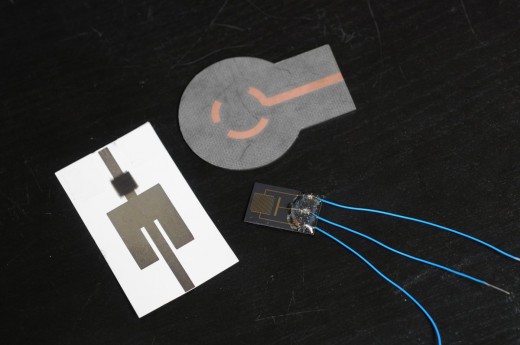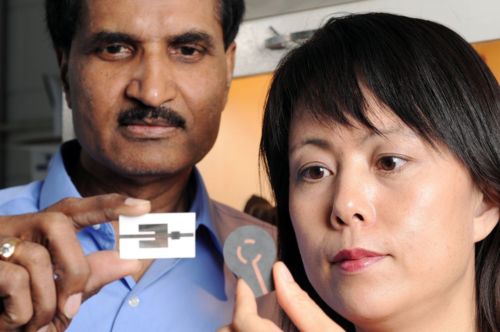
The Georgia Institute of Technology, often referred to as Georgia Tech, is one of America’s most prestigious universities in the fields of engineering, robotics and technology. This month, researchers at Georgia Tech developed an inexpensive, wireless sensor that detects the key component of explosive devices, namely ammonia.
The device is just a prototype now but it could soon be used as part of a wireless network for detecting explosive devices. The small devices look like architect stencils and are made of carbon nanotubes printed on paper-like material using inexpensive, inkjet technology.
“This prototype represents a significant step toward producing an integrated wireless system for explosives detection,” said Krishna Naishadham, a principal research scientist who is leading the work at the Georgia Tech Research Institute (GTRI) in an interview with Laboratory Equipment. “It incorporates a sensor and a communications device in a small, low-cost package that could operate almost anywhere.”
Naishadham says the sensor (pictured below) can detect ammonia in trace amounts—as low as five parts per million.

The wireless component of the device is a lightweight antenna printed on photographic paper using inkjet techniques. According to Laboratory Equipment, the wireless sensors require relatively low power, which could come from a number of technologies including thin-film batteries, solar cells or power-scavenging and energy-harvesting techniques. The researchers are also investigating ways to make the sensor operate without any power consumption.
“We are focusing on providing standoff detection for those engaged in military or humanitarian missions and other hazardous situations,” Naishadham says. “We believe that it will be possible, and cost-effective, to deploy large numbers of these detectors on vehicles or robots throughout a military engagement zone.”

Get the TNW newsletter
Get the most important tech news in your inbox each week.





